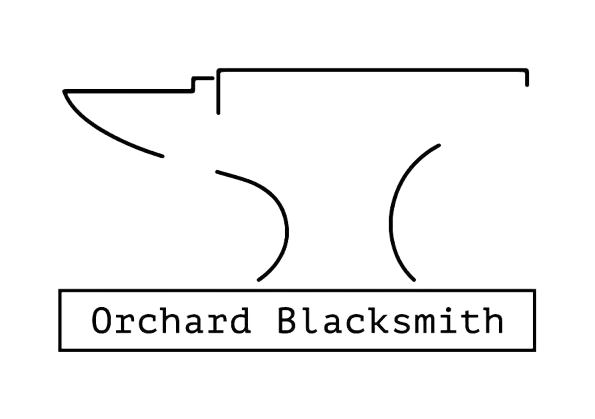Why Forge Scale Happens—and How It Can Enhance Your Craft
If you've spent any time at the anvil, you've probably noticed that flaky black crust that forms on your hot steel as you work. It falls off in chunks, covers your shop floor, gets in your boots, and somehow even finds its way into your pockets. That crust is called forge scale, and while most blacksmiths see it as a nuisance — or at best, a necessary evil — we have come to see it as something else entirely:
A creative opportunity.
Let’s break it down.
What Is Forge Scale?
Forge scale is the result of iron and oxygen reacting at high temperatures. When steel is heated, especially in the orange-to-yellow heat range (roughly 1500–2300°F or 800–1260°C), the iron in the metal reacts with the oxygen in the air, forming iron oxides on the surface. These oxides flake off as you hammer, twist, bend, or brush the steel.
In most cases, blacksmiths remove scale because:
It weakens forge welds
It causes uneven finishes
It interferes with precise shaping
It adds unnecessary grit to your tools
But if you look at it a little differently, forge scale can become a textural, visual, and even storytelling element in your work.
Can You Prevent It?
Short answer: Not entirely. But you can reduce it.
Here are some ways blacksmiths try to control scale:
Using flux (in forge welding)
Forging at lower temperatures when possible
Brushing or wire-wheeling between heats
Working in a gas forge (less oxygen exposure than coal)
Controlling air intake and forge atmosphere
Still, if you're moving hot metal, scale is going to happen. So instead of constantly fighting it, why not sometimes embrace it?
How I Use Forge Scale Creatively
Here are a few ways I’ve learned to use scale as a design feature rather than a flaw:
1. Textured Finishes on Sculptural Work
On pieces like wall art, abstract sculpture, or decorative elements, I’ll often leave scale intact intentionally. It adds a rough, primal texture that tells a visual story — one of fire, transformation, and raw craftsmanship.
In fact, clients often ask, “How did you get that finish?”
Answer: I didn’t take it off.
2. Contrast and Patina Control
Scale can act as a natural resist during patination or finishing. When I apply wax, oil, or other finishes, the scale reacts differently than clean metal — creating a natural two-tone effect.
You can also brush off just certain areas, highlighting key details while keeping the rest dark and rugged.
3. Protective Coating (Yes, Really)
While forge scale isn’t a replacement for proper finishing, it can act as a temporary barrier to rust. On some garden or outdoor pieces, I’ll leave a light layer of scale and seal it in with beeswax or linseed oil. It gives a weathered look without rusting right away.
4. Incorporating Scale in Jewelry and Fine Detail Work
Believe it or not, forge scale has found its way into some of my smaller, high-detail items, like pendants or keychains. With controlled forging and minimal brushing, I can preserve just enough scale to give a handmade, textured surface that feels ancient and organic.
5. Storytelling Through Surface
Each flake of scale is evidence of heat, hammer, and motion. Sometimes, I’ll intentionally leave a patch of scale on a piece just to remind the customer:
“This didn’t come from a factory. It came from fire.”
When Not to Keep Scale
As with most things, context matters. Here are times you should definitely remove scale:
Forge welding: Scale acts like a barrier and will ruin your weld.
Precision blades or tools: It interferes with sharpness and geometry.
Clean finishes or polished work: It’ll flake off eventually anyway.
Structural weld points: Clean metal is always safer and stronger.
My Workflow: Choosing When to Keep It
Here’s how I decide whether to keep forge scale on a piece:
Purpose – Is it functional, decorative, or both?
Location – Will it be touched, rubbed, or exposed to weather?
Story – Does the scale support the character of the piece?
Safety – Will leaving it compromise the piece in any way?
If the answers line up, I’ll use the scale to enhance, not detract.
Final Thoughts
Forge scale isn’t just debris — it’s part of the story. It’s a visible reminder that this piece was born in fire, shaped by hand, and never touched a machine press or assembly line.
If you would like to discuss a potential project with us, please do not hesitate to contact us.
